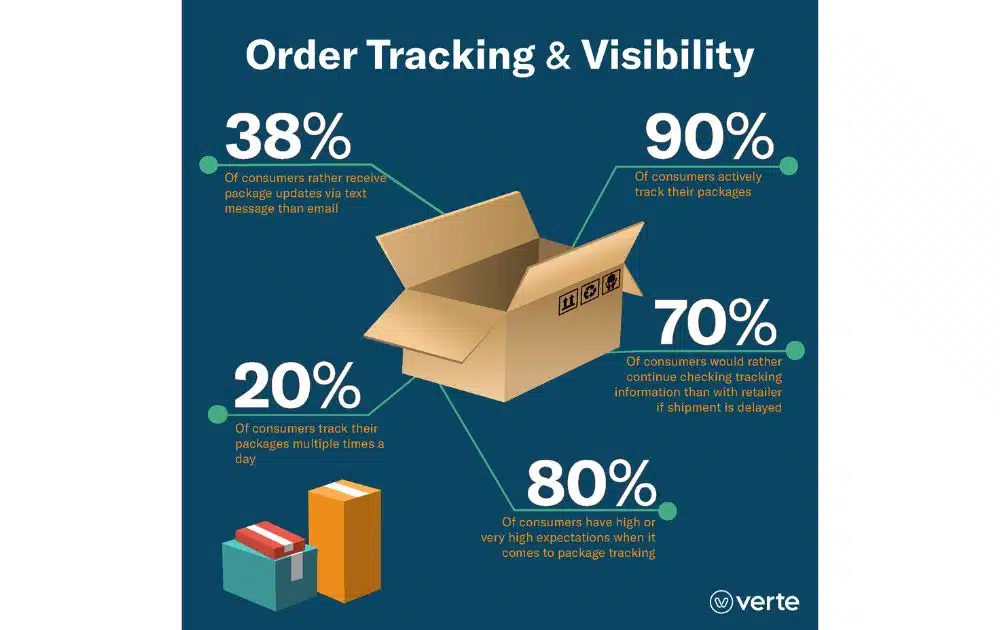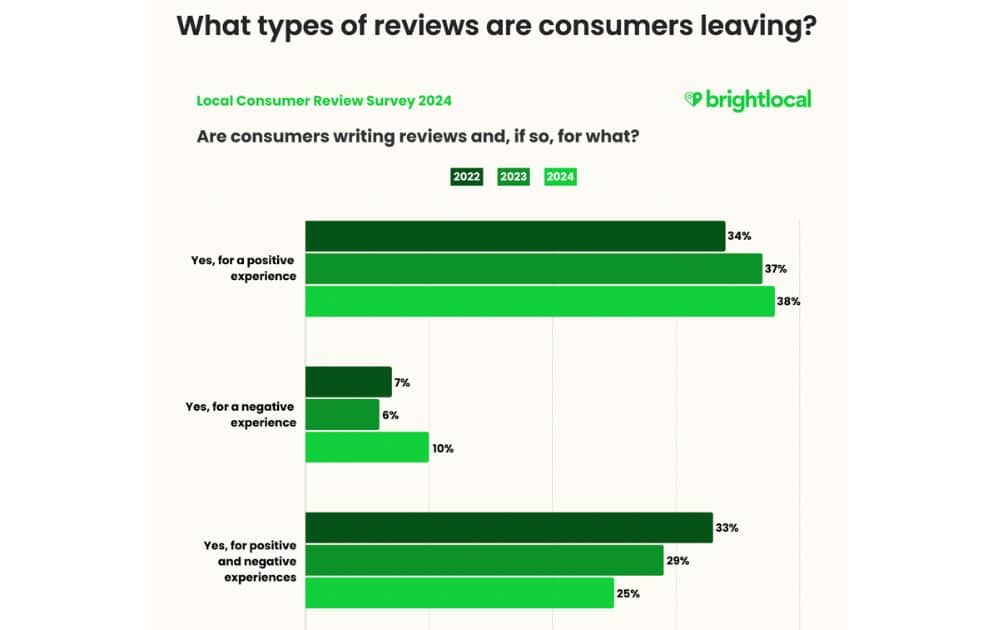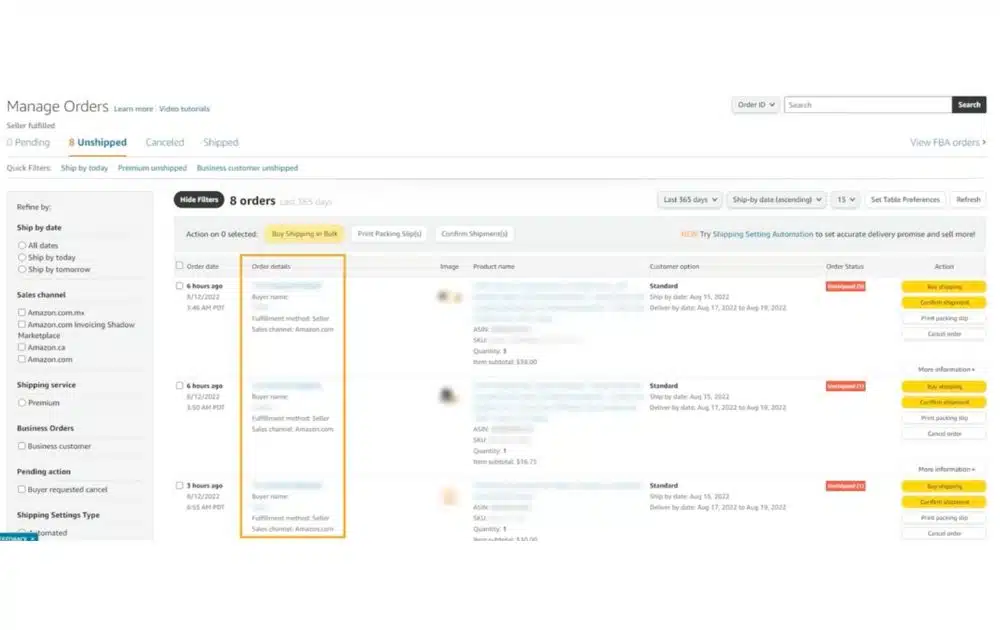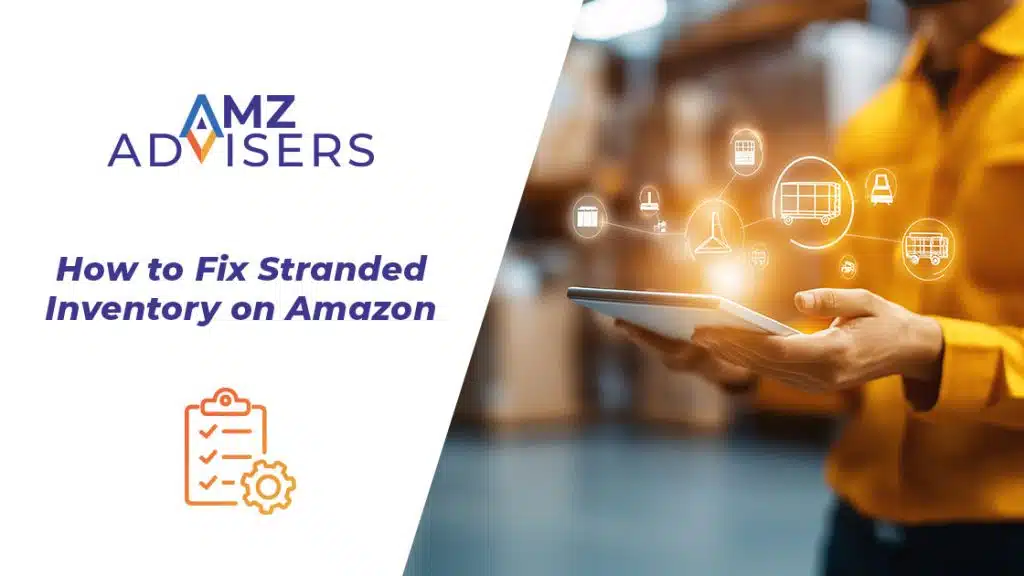Staying on top of Amazon shipment tracking will help you boost customer satisfaction and operational efficiency.
Do you track your shipment whenever you buy something online? If you answered yes, you’re no different than nine out of ten consumers, according to Verte’s research.

To delve deeper into the data they’ve gathered, one in five consumers check their shipment more than once a day, while four in five shoppers have high expectations of package tracking tools.
For Amazon sellers, shipment tracking provides critical insights into customer satisfaction and possible repeat business.
Why is Amazon Shipment Tracking Crucial for Sellers?
Aside from being a crucial part of the master the Amazon supply chain, shipment tracking is undoubtedly a critical factor in overall business success.
So, why should sellers care so much about Amazon shipment tracking? Isn’t ensuring product quality enough to retain customers? For starters, it’ll help you detect any shipment errors early, and avoid dissatisfying shoppers.
Let’s look at the benefits you’ll gain from tracking shipments on Amazon:
Customer Trust and Satisfaction
As seen from the data from Verte, the majority of shoppers try to track their orders. When they can access accurate tracking status, sellers meet their expectations. As a result, they’ll foster more trust and satisfaction in your service.
Handling Disputes and Claims
When you encounter shipment issues, whether due to delays or lost packages, having robust tracking data will allow you to resolve disputes more effectively. This can be crucial in handling claims with carriers or negotiating refunds, ultimately protecting the seller’s bottom line.
Reduction in Negative Reviews
Shipment-related issues are a common cause of negative feedback, not just on Amazon but in ecommerce in general.
Data from BrightLocal reveals that in 2024, 10% of shoppers left a review for a negative experience. At the same time, 25% of consumers reviewed a product or service both for negative and positive experiences. About 38% meanwhile, leave reviews for positive experiences.

Amazon shipment tracking can help ensure that your consumers have a positive experience and give you good reviews that will serve as social proof of your service for new customers.
Operational Efficiency
For sellers, Amazon tracking isn’t just about keeping customers happy; it’s also about streamlining operations.
Accurate tracking helps in inventory management, ensuring that stock levels are maintained and that replenishments are timed correctly.
In short, Amazon shipment tracking can lead to cost savings and a more effective supply chain management.
Related content: Inside Amazon DSP
How to Track Amazon Shipments
Here’s a step-by-step Amazon shipment tracking guide to ensure that you stay on top of Amazon logistics and your customers’ orders:
Using Amazon Seller Central
- Access the Manage Orders Page. Log into your Amazon Seller Central account. Click “Manage Orders.” Here, you’ll see a list of all your current orders, each with its status.
- Locate the Tracking Number. For each order, Amazon generates a tracking number once the shipment is handed over to the carrier. You can find this tracking number next to each order in the “Order Details” section.
- Track the Shipment. Click on the Amazon shipment tracking number to view real-time updates about the shipment’s status. This includes details on where the package is in its journey, estimated delivery dates, and any potential delays.
![]()
Integrating Third-Party Logistics (3PL) Tools
- Choose a 3PL Service. Third-party logistics (3PL) services offer Amazon sellers a streamlined way to manage the complexities of order fulfillment, especially as your business scales. A 3PL provider can handle various aspects of the supply chain, including warehousing, packing, shipping, and even returns. By outsourcing these tasks, sellers can focus more on growing their business rather than getting bogged down in the logistical details.
- Monitor Shipments through Amazon Seller Central.One of the key benefits of using a 3PL service is the integration of tracking tools that sync directly with your Amazon Seller Central account. These tools often provide a unified dashboard where you can monitor shipments, handle returns, and manage inventory across multiple channels.
Amazon FBA Shipment Tracking
- FBA Shipment Details. If you’re using Fulfillment by Amazon (FBA), Amazon handles the shipping process, but you still have access to Amazon FBA shipment tracking information, including the Amazon shipment tracking number. Go to the “Shipping Queue” in Seller Central, where you can track shipments that are en route to Amazon’s fulfillment centers.
- Tracking Inventory to Fulfillment Centers. Use the Amazon shipment tracking ID to monitor the movement of your inventory to their warehouses. This is essential to ensure that your stock levels are accurate and that you’re ready to fulfill customer orders promptly.
Using Carrier Websites for Detailed Tracking
- Direct Carrier Tracking. For more detailed tracking information, especially to track shipments overseas, you can use the carrier’s website (e.g., UPS, FedEx, DHL). Simply enter the Amazon shipment tracking number on Seller Central into the carrier’s tracking system for additional details, such as delivery route maps and customs clearance updates.
- Troubleshooting Tracking Issues. If the tracking information isn’t updating or seems inaccurate, checking directly with the carrier can sometimes provide more up-to-date information. This is useful for investigating delayed shipments.
How to Detect Amazon Shipment Tracking Errors
Detecting shipment errors early is crucial for Amazon sellers, as it can save time and money, and protect customer trust. Here are a few ways to catch these errors and tips on how to navigate them:
Mismatch Between Tracking Information and Actual Shipment Status
- How to Detect. Regularly compare the tracking updates in Amazon Seller Central with the real-time status provided by the carrier. If a package is marked as “shipped,” but there’s no progress beyond that, it might indicate a tracking error.
- Actionable Tip. Verify that FNSKU numbers and your product’s MPN are correctly associated with the tracking information. Double-check that your system records match those from the carrier. Should there be any discrepancies, don’t forget to update the tracking number. It’s also best to inform the buyer of any updates.
Missing or Incorrect Tracking Numbers
- How to Detect. A common error occurs when tracking numbers are either missing or don’t correspond to the shipment. This can be detected by cross-checking the tracking numbers with the shipping records.
- Actionable Tip. Double-check that proper shipping labels are used and that tracking numbers are accurately entered in Amazon Seller Central. If an error is discovered, correct it immediately and notify the customer with the updated tracking information.
Inconsistent or Delayed Tracking Updates
- How to Detect. If there are long periods without tracking updates, or if updates appear out of sequence, it could indicate a missed scan or a delay in the tracking process.
- Actionable Tip. Monitor the frequency of tracking updates closely. If a package shows inconsistent updates, contact the carrier to verify its current status. Keeping customers informed of any delays can help maintain trust, especially when shipping products that customers expect promptly.
Packages Stuck in Transit
- How to Detect. When a package remains in the “In Transit” status for too long, it may be stuck. This is often due to issues like customs delays or routing errors.
- Actionable Tip. Identify the last known location of the package by reviewing the tracking information. Reach out to the carrier to investigate the reason for the delay and take steps to expedite the shipment if possible. Updating the customer on the situation and providing an estimated resolution time can help manage expectations.
Related content: Amazon Partnered Carriers
Frequently Asked Questions (FAQs)
How to find a tracking number on Amazon Seller Central?
To find a tracking number in Amazon Seller Central, navigate to the “Manage Orders” page, select the relevant order, and the tracking number will be listed under the “Shipment Details” section.

How to check orders on Amazon Seller Central?
You can check orders by logging into Amazon Seller Central and going to the “Manage Orders” page. Here, you’ll see a list of all current and past orders with their statuses.
The Bottom Line
By staying proactive and addressing potential Amazon shipment tracking issues before they escalate, you can ensure that your customers receive their orders on time and without hassle. Here are crucial tips to consider:
- Double-Check Tracking Information. Always verify that FNSKU numbers, your product’s MPN, and tracking numbers are correctly entered and associated with the right shipments.
- Use Proper Shipping Labels. For Amazon FBM sellers, make sure that all shipments have accurate and clear proper shipping labels to avoid delays or errors in the delivery process.
- Monitor Tracking Regularly. Review the tracking updates in Amazon Seller Central regularly. Doing so will help you catch any issues early.
- Communicate with Customers. Keep your customers informed of any delays or issues with their shipment to maintain trust and satisfaction.
- Proactively Resolve Issues. If you notice a package is stuck in transit or has inconsistent tracking updates, contact the carrier immediately to resolve the problem.
Need help making your Amazon business more efficient and profitable? Reach out to AMZ Advisers. Our Amazon consulting services have aided brands grow across the US, Europe, Canada, and Asia, positioning them for ecommerce success.
Author
 Carla Bauto Deña is a journalist and content writer producing stories for traditional and digital media. She believes in empowering small businesses with the help of innovative solutions, such as e-commerce and digital marketing.
Carla Bauto Deña is a journalist and content writer producing stories for traditional and digital media. She believes in empowering small businesses with the help of innovative solutions, such as e-commerce and digital marketing.



